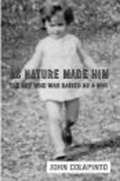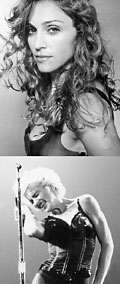THEY IMPLIED THAT YOU’RE NOTHING if your penis is gone. It’s like your whole personality, everything about you, is all directed . . . toward what’s between the legs,'” says David Reimer, an identical twin who was born as Bruce Reimer and forced, due to a botched circumcision and subsequent genital surgery, to live as a girl named Brenda. In As Nature Made Him: The Boy Who Was Raised As A Girl, the details of this nature vs. nurture case are as chilling as the author’s reporting is exhaustive. Colapinto tracks the life of a child whose 14 years of miserable “girlhood”—before a second sex change allowed him to live, finally, as David—topple the predominant theory of learned gender traits.
As Nature Made Him: The Boy Who Was Raised As A Girl by John Colapinto (HarperCollins, $26)
A renowned expert in gender identity and sexual reassignment at Johns Hopkins, Dr. John Money espoused a “clean slate” theory: “‘Psychologically, sexuality is undifferentiated at birth and . . . becomes differentiated as masculine or feminine in the course of the various experiences of growing up.'” After seeing Dr. Money speak on television, Bruce’s mother Janet sought him out. Bruce then became Brenda following clinical castration and minor genital surgery, and Money published his “successful” results in Man & Woman, Boy & Girl, which subsequently shaped scientific and societal opinions on the subject.
As she grew up, Brenda Reimer demonstrated that the good doctor’s theory was bogus: From the get-go, Brenda was a boy—amazingly, stereotypically so. She tore off the first dress her mother gave her; she walked, sat, and “talked about guy things”; she fought off her twin brother’s would-be attackers; and she even “daydreamed of an ideal future . . . as a 21-year-old male with a mustache [and] a sports car.” Despite the family’s efforts, Brenda’s gender identity never wavered. Money, however, was all the more determined to make her a girl, subjecting her to multiple humiliations in his clinic, such as asking her to inspect her brother’s genitals. He also lied in case reports and pumped the unwilling teen full of hormones, all the while refusing to consider an alternative to his theory, which, unfortunately for the Reimer family, resulted in years of neuroses, depression, and more than one suicide attempt.
It’s astonishing that Colapinto can maintain such journalistic objectivity while telling this family’s tragic story. Originating from an article he wrote for Rolling Stone, the book has gained enough credibility to prod the scientific and psychological communities who accepted Dr. Money’s theory all those years ago. Rather than scrutinizing David like a tabloid-TV talk-show host, Colapinto relies on therapy notes, medical records, and psychological workups, which he interlaces with in-depth context on gender and sexual identity theory. In providing this detailed scientific framework, Colapinto allows the real-life heroes and villains to paint themselves as such, inviting the reader to enter this gender drama that has yet to reach its final act.
Although over a hundred sex reassignments occur per year in America, the vast majority involving intersexes (hermaphrodites), it has taken the plight of a “normal” child for anyone to make a significantly audible fuss about doctors tampering with newborns’ genitals. Even with the formation in 1993 of the Intersex Society of North America to prevent such intrusions—as well as numerous sexual minorities, from the bisexual to the transsexual, expressing their gender and sex identities as innate rather than external—David Reimer’s case may be what brings the scientific and psychological communities around to reconsidering their positions. As Nature Made Him does more than reveal one person’s agonizing quest for their true self; it exposes a society that’s horrified by nonconformity, so much so that it will resort to extremes to make a person fit into a mold—even if that means breaking nature’s mold to do so.








